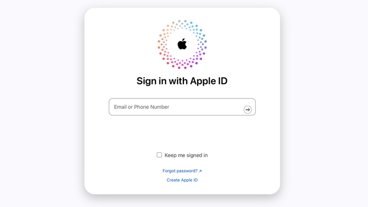WSJ: Apple's tight control of iAds frustrates advertisers
The Wall Street Journal reported on Sunday that advertisers have had difficulty adjusting to Apple's new advertising system. Part of the problem, those partners said, is that Apple maintains "tight control over the creative process."
"Part of the reason some marketers are experiencing delays in getting their iAds to market is that Apple has kept tight control on the creative aspects of ad-making, something advertisers aren't used to, according to several ad executives involved with creating iAds," the report said.
It continued: "That has made the creation of mobile ads laborious, taking about eight to 10 weeks from brainstorm to completion — longer than normal for most mobile ads, executives said. The building of the actual ad, handled by Apple, in some cases is taking two weeks longer than expected, one person added."
Part of the hiccups are said to be the newness of the program, as Apple and its partners attempt to iron out the kinks. The interactive iAds began to show up in software on iOS 4 compatible devices on July 1.
iAds provide richly interactive ad experiences inside developers' apps, providing them a 60 percent cut of the advertising revenue. The hope is the advertisements — noted by the iAd logo in the corner — will be more compelling to users, because they don't have to leave their app and launch a browser to view them.
Sam Altman, Chief executive of social networking app Loopt, told the Journal that he feels the start of Apple's iAd network has been "disappointingly slow." However, he believes it will eventually perform better in the long term.
The report also said that Apple designs the iAds in HTMl5, but it has not yet provided a developer kit to its advertising partners to help them understand the capabilities and limitations of the format. It also alleged that Apple does not tell agencies where the iAd will appear, forcing them to search for their ads rather than easily access them.
The largely negative account of the start of the iAd service is a stark contrast from a different report last week from the Los Angeles Times, which painted a much more rosy picture. Initial advertisers like Unilever and Nissan said that they have had great results with iAd, with the car maker saying that users are five times more likely to click an iAd than a traditional mobile advertisement.
Developers, too, have found success with the new iAd platform. Dictionary.com said the amount it charges for ad space in its mobile advertisement increased 177 percent since Apple launched iAds. In addition, CBS Mobile has seen up to $25 CPM (an advertising term that means cost per thousand) in its applications for CBS Sports, CNet and GameSpot.
 Sam Oliver
Sam Oliver










 Charles Martin
Charles Martin
 Christine McKee
Christine McKee
 Malcolm Owen
Malcolm Owen

 Mike Wuerthele
Mike Wuerthele


 Chip Loder
Chip Loder







32 Comments
Wasn't there recently a report saying it's great?
By who?
Yes?great in some ways (effective as advertising and as a revenue source) and pleasing to advertisers and developers alike. But challenges are still interesting to discuss, since this a unique service. Apple is a creative and production shop, making ads in collaboration with ad agencies, and deploying them to handheld devices in a new way. That?s a pretty unusual system! Luckily, advertisers who don?t like the particular ad service Apple is offering (maybe they?d rather have simpler ads that someone else builds) are free to deploy iPhone ads in other ways.
Now, the WSJ may be hit-baiting a bit with their language: any ?Apple failure? large or small can become a profitable headline
Internet advertising is a mess right now, and Apple is absolutely doing the right thing by exerting "tight control over the creative process." Internet advertising in general is high-volume / low-quality, and that makes for a lousy end-user experience. I would go so far as to say that the current Flash banner / AdSense model actually cheapens the Internet, by and large, by stifling the advertiser canvas so that the only plausible creative is quick and dirty.
Kudos to Apple for having the foresight and the wherewithal to implement a revamped approach.
Wasn't there recently a report saying it's great?
It was mentioned in the article if you read the article all the way through before you wanted to be the first to post.
If it's true that Apple didn't let ad purchasers in which apps their ads would appear in then it's Apple's fault.
As for their control over iAds, it can only be a good thing. Looking at net ads over the past 15 years they've all been lousy. They should be learning from Apple on how to create a proper ad. Or the Old Spice campaign.